The Interurban
Before the Denison & Sherman Railway and its sucessor the Texas
Electric Railway -1890's mule car trolleys were the local transportation.
This photo is from the Herald Democrat ; Sherman Sesquicentennial Edition.
Read
a Newspaper Article about early transportation plans for East Sherman
By Rea A. Nunnallee
The fore runner of the old Interurban was the old horse drawn street
car in Denison. In 1885 the line was electrified and the first trolley
car in Denison replaced the old horse or mule drawn car. The city
of Denison also had a steam powered street car that circled through South
Denison and the Cotton Mill area. The fair on the early line was
five cents round trip.
The first Interurban Railway built in Texas was put into operation
in May 1901. The first company was organized by J. P. Craiger, John
Craiger and J. W. O'Grady. The trip from Denison to Sherman was made
in 30 minutes, a distance of 10-1/2 miles. The fair was twenty-five
cents. The second line was built in 1902 and extended from Dallas to Fort
Worth and known as the North Texas Traction line. This company also
owned the line from Fort Worth to Cleburne that was built in 1912.
In 1905 J. F. Strickland became associated with the railway and began making
plans for extending the line. Mr. Strickland formed an association
of some prominent North Texas citizens for the purpose of obtaining right-of-way
and franchises between Sherman and Dallas. The association was called
the Texas Traction Company and the company was incorporated Sept. 25, 1906.
By then the preliminary engineering and negotiations had been completed,
and work was started on the construction of the electric line. Some
two years later this was completed and on July 1, 1908 the first Interurban
was run from Sherman to McKinney and another was run from Dallas to McKinney
where a large meeting was held, in dedication of the line. 1909 booklet : Map of Texas Traction Company, Denison and Sherman Ry. Co. - and connections -
In 1911 the 50 miles between Galveston and Houston was built and
electrified. This road ran for several years and was a very popular
route for people in Houston to use when visiting Galveston.
On April 15, 1911 the Texas Traction Co. purchased the Sherman Denison
Railway Co. and put the complete lines under one operation under the name
of Texas Traction Company.
About this time Mr. Strickland began the organization of another
company to operate from Dallas to Waxahachie and Dallas to Corsicana.
This new company was known as the Southern Traction Company, and the main
office was in Dallas. The company was chartered March 27, 1912.
On October 12, 1913 the company completed its Dallas to Waco division and
began carrying passengers on that date. The Corsicana route began
carrying passengers on October 20, 1913. By 1916 thought of consolidating
the two lines, The Texas Traction Company and the Southern Traction Company
under one company was being considered, and on July 5, 1916 a charter was
asked for, and the new company took over January 1, 1917.
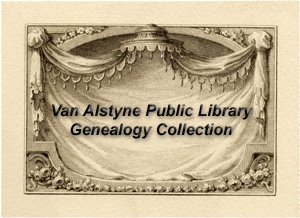
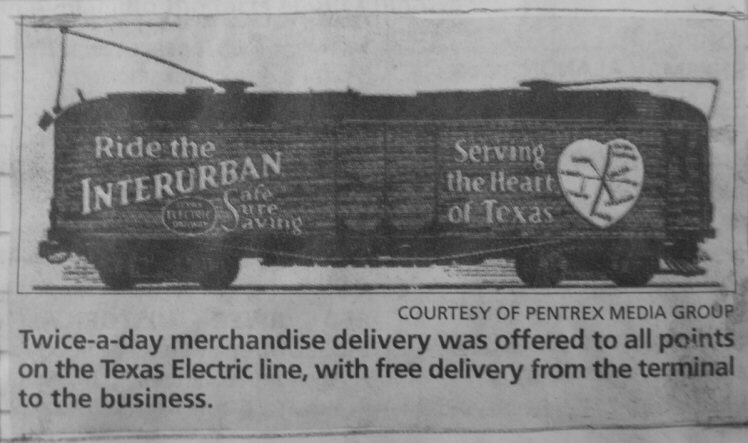 The Texas Electric Railway replaced an already operating Denison &
Sherman Railway that ran between Sherman and Denison.
The Texas Electric Railway replaced an already operating Denison &
Sherman Railway that ran between Sherman and Denison.
-
Conductor Malcolm Paul Jay and his car in Sherman abt 1916
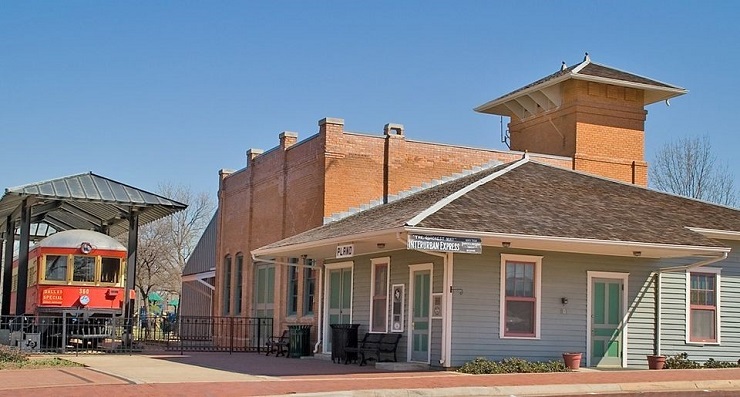
Interurban
Railway Museum in Plano
contributed by Debbie Calvin
c2022

"Texas Electric Railway was a system of some 250 miles in
length, ranking it with some of the premier lines of Ohio and Indiana,
and exceeding any of the major systems radiating from Chicago. The Texas
Electric operated some of the handsomest cars in the land and made Dallas
into one of the busiest interurban centers in the nation; It's seven track
downtown Interurban Terminal bustled day and night with the arrivals and
departures of the cream and crimson interurbans to Waco, to Denison, to
Corsicana and other north Texas center of urban import." The first trip
of this interurban was June 28, 1908.
Information about Fares and train schedules
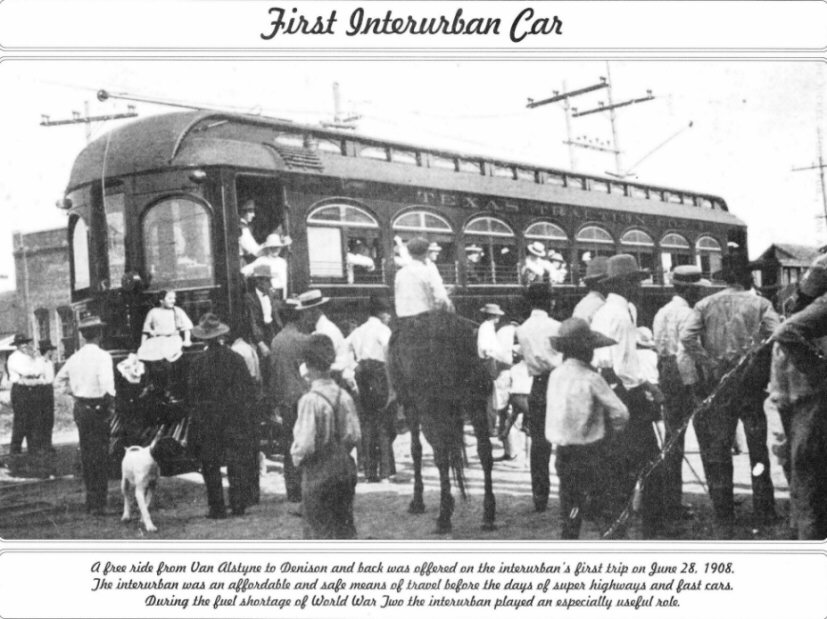
Genealogy: Van Alstyne Museum calendar- Local History
Van Alstyne Public Library, Van Alstyne, Texas
Photographs of the Texas Electric Railway in Grayson Co.
By Rea A. Nunnallee
STATION AND FIREFor a while luxurious parlor cars were needed. This was a trailer
car that was carried behind the regular car. These cars had carpet
on the floor. There were large revolving seats and each seat held
only one person. Each parlor car would seat only a half as many passengers
as the regular car. There was an extra charge for riding the parlor
car. Also U.S. mail was carried on certain cars. These cars
were the same as regular passenger cars, except they were re-modeled and
a part of the car arranged so it would house a small railway post office,
and a postal clerk worked in this section and would assort the mail he
had picked up at the last station, the tie out the mail for the next station.
They were kept rather busy.
And recently when writing about the early Express car, we forgot
to mention, that this car also hauled the major part of mail that was brought
into Van Alstyne. This mail originated or was assembled at a Dallas
post office and brought into Van Alstyne in sealed pouches. The mail
was unloaded along with the freight at the local depot, and then about
7 a.m. Bill Powell would load the mail on a two wheel cart and carry it
to the local post office, sometimes making several trips.
The local Interurban station was a part of the present Texas Power
and Light company office. The back part of the building was used
as a reducing station, in which the high voltage alternating electricity
was run through a motor that pulled a generator which produced direct current
for 600 volts. This was carried out through large wires. Direct
current does not carry well and does not carry far. The front part
of the building was of wood and housed the ticket office and waiting room.
Then on the northeast corner was an additional wooden building that house
the freight room and freight office. The wooden part of the building
was destroyed by fire, at 1:30 a.m. Sunday morning December 25, 1921.
Fire is said to have stated with high voltage getting in out (illegible)
phone line. The temperature was well below freezing. The fire
was in the wooden part, and that part was a total loss. There was some
damage to the generating room. (Illegible) also lost a popcorn machine
which was stored in the building. Work began on clearing the mound for
a new building Monday January 9, 1922. Tuesday, April 22, 1922 the
new interurban station was (illegible) and an opening held. James
P. Griffin who was general passenger agent was present at the opening.
The new building (illegible) older wood structure. The foundation
was of concrete and extended down to white rock. This was built with
the intention of later building an upper story to house the dispatchers?
office for the Dallas-Denison line. The dispatchers office was then
in Sherman, and Van Alstyne would be nearer the center of the line.
Each year during Dallas Fair time, the Interurban would run excursions
to the Fair. In the early days the round trip fare was as low as
one dollar. Later on the prices went up. Two or three trailer
cars would be tied on behind the first car, and the early and late cars
were all loaded, and one was lucky to get a seat. Sometimes two sections
would be run.
Interurbans passed through Van Alstyne both north and south about
six o'clock in the morning and continued each hour during the day and continued
until about midnight. But as time went on cars were discontinued
until about the time the Interurban quit there was only about two hour
service, and some of the earlier and later cars were among those discontinued.
There was also a train called the work train. This was operated
for the benefit of the company. The engine was about the size of
a regular car, only was like a flat car, and in the center was a small
room used for the operator of the car and the train crew. This engine
was used to haul car loads of gravel or other equipment up and down the
line. Stopping where ever needed. It had no regular schedule
and only went where the dispatcher directed.
"Did You Know....."
by Rae Nunnallee
When first place in operation each interurban car had two men on
each car. One a motorman that sat in the front left corner of the car and
watched the track, and controlled the movement of the car. On the
right front side was a large sliding door which opened into a small compartment
where baggage could be stored. If there was a tunk going it was loaded
on a truck that was a high as the floor of the car, and it was rolled over
close to where the car would stop. When the car stopped, the truck
was rolled along side the car, the sliding door would be opened and the
truck would be slid into the car, and it went right along with the passenger.
Passengers were loaded from the back and the concudtor would assist
passengers in getting off or on, would pick up the tickets, accept cash
fares and give the signal when he wanted the car to move forward, backwards,
or stop at the next crossing. There was a cord that extended the
full length of the car, and a bell was in the motorman's booth. One
pull of the cord rang the bell one time and that meant for the car to stop
at the next crossing or station. Two bells meant go forward, and
three bells meant back up. The cars were divided into two parts;
the front being the smoker, and the back part was no smoking. Most
of the ladies sat in the back, but later on, when the ladies began to smoke,
it didn't make much difference. Later on the cars were re-designed
and the right front sliding door was disposed of and steps were placed
in the right front corner, just in front of the wheels of the car.
A folding door was installed, and any trunks were carried on the regular
baggage or express car, and came along at a later time. The conductor
was disposed of. The motoman did the whole job; ran the car, took
up tickets, helped passengers on and off, replaced the trolley pole when
it jumped off, and kept up with who was going where.
The Interurban was used by some passengers for commuting.
Several people from Van Alstyne worked in Dallas, McKinney, Sherman or
Denison, and would ride the Interurban to work. Commuter books could
be purchased. There were two sizes of the books. The larger
books were good for about a month and had so many one way trips.
The tickets could be used either way. The books were sold at a lower
rate and the round trip cost the customer little more than the one way
fare. Early, there were mileage books sold. One paid about
$8.00 for $10.00 worth of ride. Each ticket was good for 5 cents.
If the one way fare was 45 cents the conductore tore out nine tickets or
45 cents worth of coupons.
The Interurban rails are still visible in the streets of Van
Alstyne
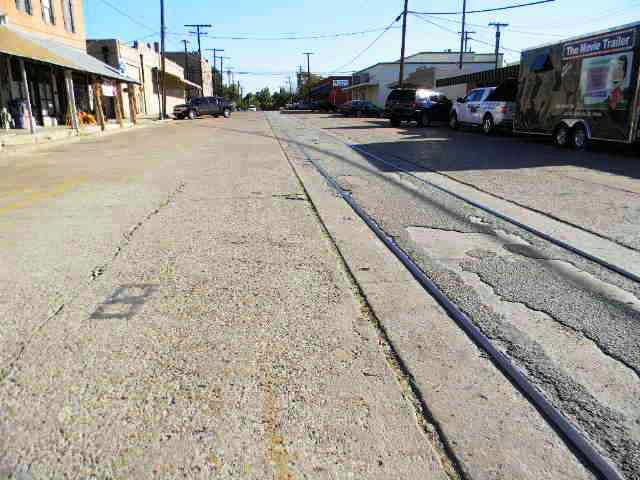
Freight cars on the Interurban
Van
Alstyne is Planning an Interurban Park & has obtained two Interurban
freight cars.
Van Alstyne Leader
April 22,1966
pg.1
Rea A. Nunnallee
There were four freight or express cars, two each way each day, when
the Interurban first started. There was the north bound car, known
as the Dallas News car that passed through Van Alstyne about four a.m.
and carried the Dallas Morning News from Dallas to Denison. This
car also carried the majority of the local freight. This returned
to Dallas passing through Van Alstyne around noon. Then another car
went north going through about 2:30 p.m. and returning in the evening.
After the line had been running some time trailers were used for additional
service. A trailer would be pulled to Sherman and switched into the
freight depot on East Houston and the local station crew would unload then
load for the return trip to Dallas that evening. The freight charge
at first was twenty-five cents per on hundred pounds or part thereof, from
Dallas to Van Alstyne. Later it was raised several times. When
the rate was twenty-five cents there were very few claims paid for breakage.
At first only passenger and local freight was carried. In May 1928
the line was given a franchise to handle railway box cars, and freight
was handled on a car load basis. A special electric engine was made
which would pull around 12 loaded box cars. This engine had much
more power than the regular express or baggage cars. Sidings were
placed in each town where car loads of merchandise could be loaded and
unloaded. In Van Alstyne the car load siding was along the east side
of the old cotton yard, or across the street west from the city pup station.
Cars could be loaded or unloaded from the east side, from a truck of on
the west side from the cotton platform. This heavy freight franchise
continued as long as the Interurban operated.
The Interurban was always very accommodating and would stretch a
rule when necessary. I remember about 1926 or 27, we bought a music
booth from a Mr. Jackson in Sherman. We took the booth apart and
there were four sections about 8 by 12 feet. The evening freight
car was backed up Travis Street, the four sections loaded on the trailer
car, and it was hauled into Van Alstyne, and unloaded in front of the store.
This was shipped owners risk. That is if anything was broken that
was our hard luck. I rode in the freight car trailer, and kept the
sections from failing over. It was a rough ride. Another time
I was in Dallas, and driving a Model T Ford two=door sedan. This
was along about 1927 to 1930. I bought a very large R.C.A. Radio
cabinet. I bought it at a very low price because it was a sample,
and I would take it without having it crated for shipping. I tied
it on the side of the Model T, carried it down to the Interurban freight
station, and shipped it owners risk into Van Alstyne. I came up on
the afternoon freight car, and arrived without a scratch. 
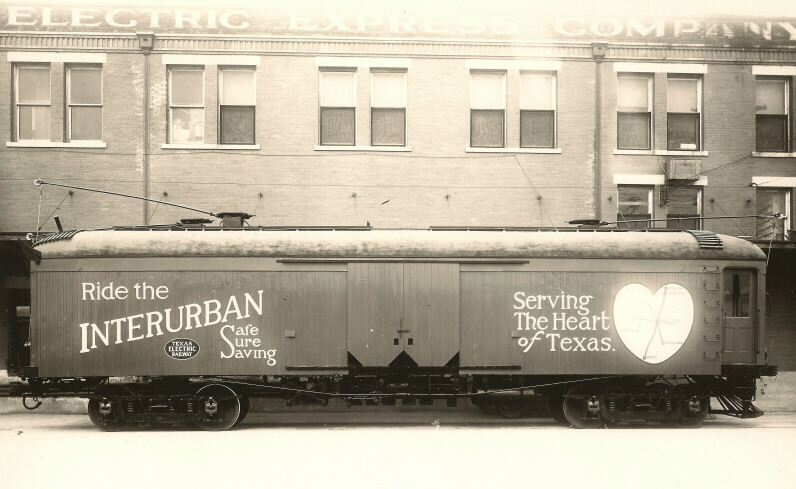
Interurban photo taken in Van Alstyne


History of
Texas Electric Railway Company
Copyright © 2025, TXGenWeb.
If
you find any of Grayson County, TXGenWeb links inoperable, please
send me a message.
|
|